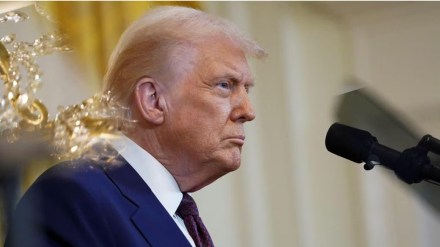By Jamal Mecklai
Volatility, particularly when it is high and rising sharply, feels almost physical—talk to any trader and indeed, to companies that have to plan their businesses in the face of high uncertainty. The pain can get pretty intense over a period of time, after which, in general, the market itself gets exhausted and things calm down.
But not this time.
Before today, the volatility of the DXY has suffered four sharp peaks since 2002, lasting an average of 253 trading sessions (289, 102, 240, 381), after which, in all cases, it came down, sometimes sharply, and occasionally steadily. Today, the volatility of the DXY has been rising for 261 trading days (since May last year), suggesting it may be coming close to a turning point. However, with Donald Trump becoming increasingly unable to always get what he wants, his petulance will continue to jerk markets (and businesses) around, sustaining this insane volatility pattern beyond “normal” timelines.
Thus, it seems to me that high volatility will likely last till at least the end of his term and perhaps longer, since even at the end of his term, global systems—both geopolitical and economic—will likely still be unstable. Mental health issues will rise, people will burn out faster, and companies will have to contend with seriously fluctuating results, unless, of course, they have risk management systems in place that can deliver at least reasonable results over the medium to long term.
In the short term though, this continuing pressure could trigger a collapse in global markets, and I suspect it may be sooner rather than later. US treasuries, which are the bellwether for the financial health of the world, could be where things start coming apart—it is already hugely nervous and has to contend with any number of possible triggers. Leading the pack is Trump’s Big Beautiful Bill, which is expected to be passed by the US Senate right before the Independence Day holiday on July 4. Since it is a Friday, I could see the storm clouds gather in the market in the weeks before that, particularly with the other outlandish events battering sentiment—Elon Musk v/s Trump, for example, and the July 9 deadline for Trump’s tariffs, and, far worse, the escalating Palestinian genocide and the Russia/Ukraine war. Be even more careful than usual.
Back at the farm, though, things look a tad better. The Reserve Bank of India (RBI) has stepped up to the monetary easing plate aggressively and delivered a slightly surprising 50 bps cut AND reduced the cash reserve ratio (CRR) by 100 bps; it did, however, change its stance to neutral, suggesting that it was done with intentions to cut rates in the near term. The forward premiums, which were already shifting downwards in anticipation of a 25 bps cut, could slip further.
Some exporters, who had been increasing hedging to protect against the crazy volatility, may slow down dollar sales, since with very low premiums, they may believe it makes more sense to bet on catching an attractive spot rate. However, we note that since April, the intra-day high-low spread has averaged more than 40 paise, which is higher than the current three-month premium, and trying to catch an attractive spot rate dumps you into the volatility pit—not a pleasant place for anyone. A slowdown in exporter selling, if it materialises, could push the rupee higher, but on the other hand, lower rates could increase outflows from the debt market—already in this financial year, debt outflows have exceeded $3 billion—pushing the rupee in the opposite direction. Clearly, we are likely to see continued high rupee volatility as well.
More than ever, companies should get out of the zero hedge approach. Some companies—large, professionally managed ones amongst them—believe that the rupee always falls more than the premiums, so they take a punt and ALWAYS stay unhedged. To my mind, this is dangerous and plain wrong. Over the last five years, simply staying unhedged on 12-month exposures has outperformed hedging on Day 1 by—hold your breath—a pathetic 0.1%. Given that, it would make more sense to hedge all exposures on Day 1, since then, at least you know your realisations and, importantly, you are carrying ZERO RISK.
Of course, it is difficult for companies to hedge 100% on Day 1 for business reasons, since visibility is not perfect (particularly today), transactions may be cancelled, etc. Thus, it is important for companies to have a strategy that enables them to keep only some part of their exposure unhedged—reducing risk from the zero-hedge approach—while following a rule-based model to ensure that they are not trapped in wild volatility trying to guess or time the market.
The writer is CEO, Mecklai Financial.
Disclaimer: Views expressed are personal and do not reflect the official position or policy of FinancialExpress.com. Reproducing this content without permission is prohibited.
